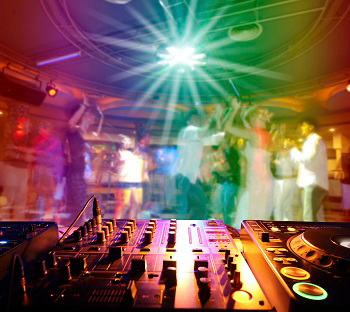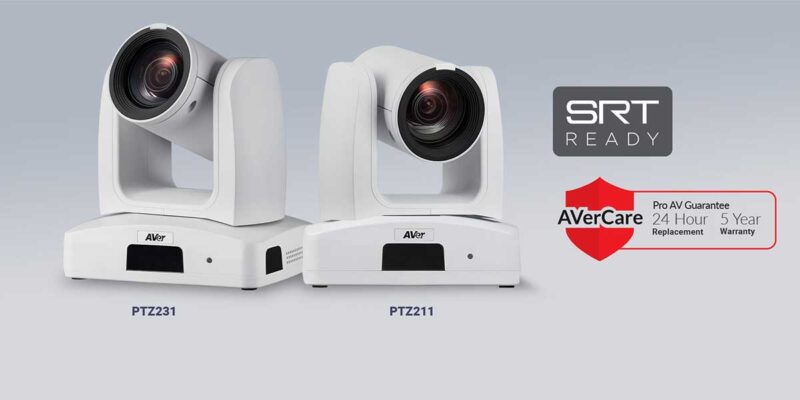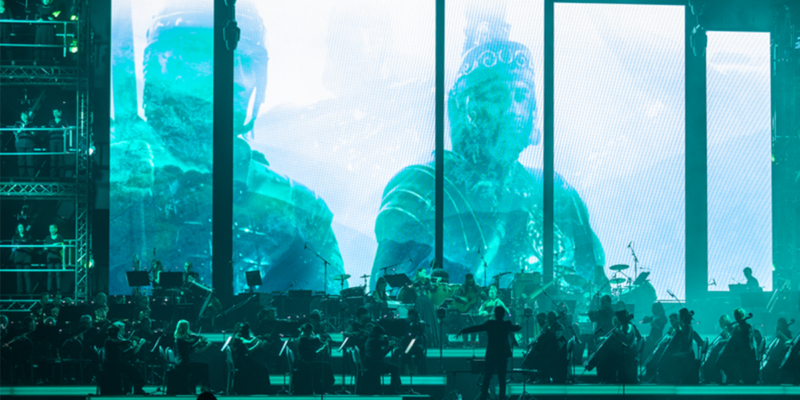The Hospitality Industry Grows More Hospitable to Music — and Pro AV
 By Dan Daley
By Dan Daley
Special to InfoComm International
Hotels have been a stalwart of event production for decades, hosting trade shows, conferences and everything in between. They’re also no strangers to live music: The hotel lounge bar has long been the setting for a wide variety of acts — cheesy and otherwise. But a cohort of hipster and aspirational properties are stepping up their game when it comes to live music, and that’s creating opportunities for AV systems integrators and designers who see the hotel becoming part of the music biz’s front line.
Get a Room
The Ace Hotel, to which Travel + Leisure magazine attributes the genesis of the “modern hipster hospitality phenomenon,” from its origins in grunge-era Seattle, has performance spaces in its New York and Los Angeles locations. The former is Liberty Hall, an event space that holds up to 200 people and is used for shows sponsored by instrument maker Martin Guitar and featuring performers from the Luaka Bop record label roster. Those and other artists also perform at Ace properties in Los Angeles, Pittsburgh and New Orleans. On the left coast, the hotel’s Theatre at Ace Hotel features a rider-worthy d&b audiotechnik PA system and Midas Pro2 FOH console.
Other hotels have followed suit. The Living Room, a bar inside the W South Beach in Miami, offers weekly rotating live-music lineups. Austin’s new Hotel Van Zandt, which opened this year, features music 365 days a year and was intended to complement SXSW and other music-centric events the city hosts.
Not surprisingly, Nashville, Tenn., already has a few properties that feature live music in public spaces, such as the touring-musician-favorite Hotel Indigo, but it’s about to add more of them. The Westin Nashville will open this fall with a 27th-floor rooftop bar, with sound and lights designed and installed by the hotel’s AV partner PSAV, which will be the crown jewel of the 450-room hip hostelry’s 20,000 square feet of flexible event space. A Virgin hotel is also planned for Nashville, where 14,000 square feet of meeting space would be complemented by both a live-music venue and a recording studio.
Michael McDavid, the Westin Nashville’s newly-appointed Director of Entertainment, says the AV equipment that will be specified and installed for the hotel’s rooftop performance space will be state of the art, and he agrees that in a city so closely associated with music, it could be no less. However, he emphasizes that he’s not engaging in an AV arms race.
“It’s not a competition to see who has the biggest or the loudest PA system,” says McDavid, whose music-industry Rolodex was filled during years as the VIP liaison for upscale Lucchese Boots, which emphasizes its celebrity customers like Eric Church and Kacey Musgraves. “It’s all about how we set the stage and the vibe we create. Audio and video technology is part of that.”
Long Time Coming
The foundation for this trend has been building for some time. As sales of recorded music peaked in 2001 and began a since-unbroken downward spiral, touring concerts and other live music shows have risen in value; what had been a $1.7 billion business in North America that year has grown to nearly $7 billion last year, according to Pollstar. That shift coincided with the rise of the boutique hotel. Although the category dates back to the early 1980s, when Studio 54 impresario Ian Schrager opened the first Morgans Hotel in New York City, it blossomed after the turn of the century, when the big chains launched their own boutique brands, such as Starwood’s W and Hilton’s Curio.
In recent years, those two upward arcs — the growth of live music and boutique hotels — have begun to merge. Jan Luszczek, a systems designer for Clair Solutions, the integration division of the legendary touring-sound company, says the company got involved early in the trend, working with Schrager’s Morgans hotels in the late 1990s and staying with him as he began to consult for Marriott’s Edition boutique marque. “Today, there’s not an open space in a hotel like that that doesn’t have some capability for either live music or a DJ,” he says.
Luszczek says the development of smaller, more powerful speakers that have much tighter coverage patterns has helped further the trend in recent years. And the proliferation of brands and models means some will gain traction on the basis of fashion as much as performance.
Bringing In the Big Guns
One indication of the intensity of the hotel/music venue trend is the engagement of sound system designers and acoustic professionals who usually work in the upper echelons of the recording studio market. John Storyk, whose portfolio includes Jimi Hendrix’s Electric Lady Studios, is finishing up a performance space connected to a recording-studio control room on the rooftop of the Gansevoort Hotel in Manhattan’s Meatpacking District. What sets this kind of work apart in hospitality settings is the need to isolate performance spaces even as sound systems become more powerful and sophisticated, he says.
“The challenge is that you’re introducing music, sometimes pretty loud music, into a hotel where people are paying a thousand dollars a night to sleep,” he says. “You need to be able to keep the [sonic] energy up without it getting into guest rooms.”
That involves isolation techniques, such as floated floors and room-within-room construction, as well as technology, such as highly-focused sound systems that keep energy focused where it needs to be and off surfaces that can reflect it. But, Storyk cautions, whatever AV integrators are bringing to these kinds of projects has to be done in conjunction with acoustical and architectural input.
“It’s not good enough to just put speakers in,” he warns. “Otherwise, you’re looking at tens of thousands of dollars of equipment and installation that may have to be undone. Integrators and builders have to understand the need to isolate the performance space acoustically. Stages in hotels are an opportunity for integrators to sell more high-end sound equipment, but they also present a unique challenge.”
Michael Cronin, another recording-studio designer and builder (a recent project was a personal studio for mega-songwriter and One Republic frontman Ryan Tedder) has also been tapped by marquee-named hotels for their lobby spaces. He says in entertainment-centric cities like New York and Nashville, the proximity of clubs and hotels, their shared clientele, and the primacy of live music as the music industry’s revenue source have combined to make hotels a new nexus for performance spaces where the “right” people can and want to be seen and heard. That, he says, is an opportunity for AV.
“The hotel business is all about ‘heads in beds,’ and hotels want the heads that will spend the most money for a bed,” he says. A combination of the right amenities, including good sound and eye-catching video, can make a hotel lobby or patio a gathering place for the right entertainment industry “heads,” he says. “The local clubs become a benchmark; the hotels use them as a starting point when it comes to sound.”
A New Niche for Integrators
The trend of music in the lobby has potential as a new market niche for AV integrators and live events professionals. “If you’d have asked me two years ago if we’d ever be working in hotels, I’d have said no way,” observes Zach Richards, Director of Installations for Austin-based Big House Sound, which specializes in supporting live events and AV integration in environments like houses of worship, restaurants and clubs. In that short time, Big House Sound has done installed live-music projects in the lobbies and other public areas of Austin’s Hotel Van Zandt, the even newer SoCo Hotel there, and Austin’s W Hotel. “Lobbies aren’t places where you just check in anymore,” he says. “They’re also places to check out music and musicians.”
In the Hotel Van Zandt, Big House Sound installed an EAW KF series sound system mixed through a Midas M32 audio console in the property’s fourth-floor lounge area. While the audio from the stage can be routed via network to anywhere the hotel’s distributed sound is installed (Big House also did the hotel’s other, more conventional audio systems), the company took care to install delay speakers to extend the PA system’s reach into the pool area when its doors are opened so it’s the music PA people hear, not the restricted-range ceiling speakers.
“It’s important to make the distinction when it comes to the quality of the sound for live music,” he says. “People have expectations that these hotels have to meet.”
Richards notes one major difference in this type of integration project: The integrators spend more time collaborating with the hotel’s interior design team than with its architects or construction contractors. How the AV components look is as important as how they sound in boutique hotels, where vibe is as critical to success as plumbing and nice beds. In fact, Big House Sound, which won the Hotel Van Zandt project in part based on its work on the new Austin City Live/Moody Theater performance venue, replaced its first speaker model choice for the lounge after the interior designers felt the initial choice was too visually disruptive.
“Live music is now part of the attraction for these kinds of hotels,” says Richards. “It’s part of attracting the right people to the hotel. In fact, many of them might not even be staying there. It’s just about creating the right vibe.”
This column was reprinted with permission from InfoComm International and originally appeared here.





